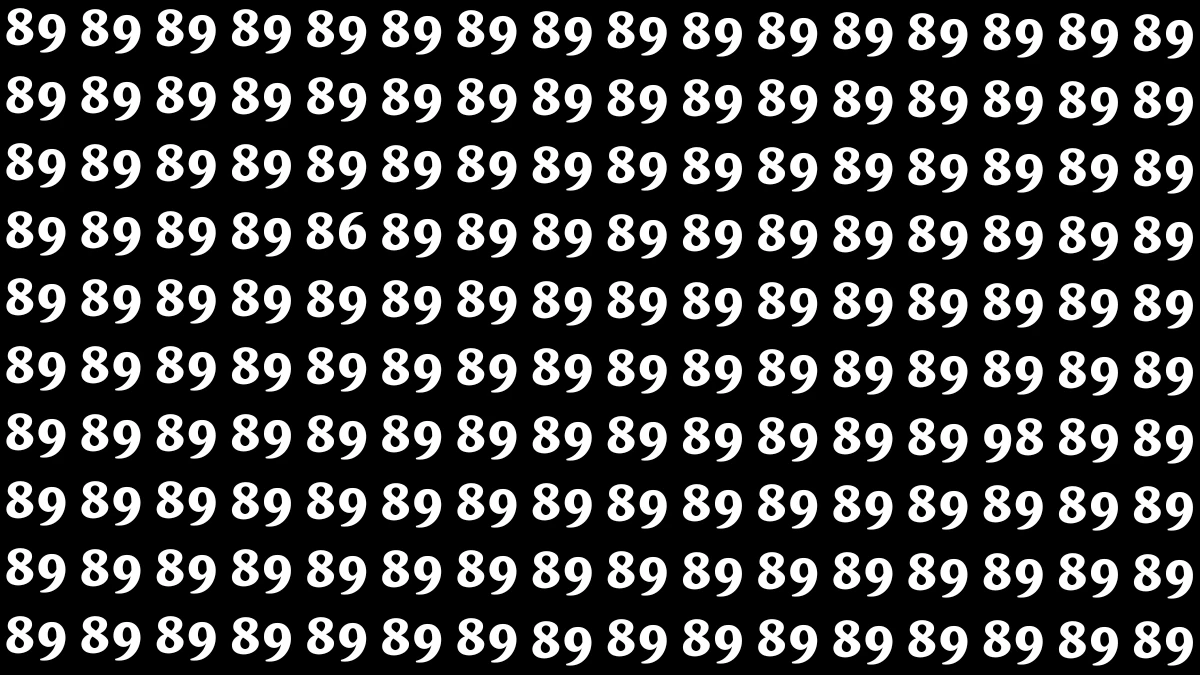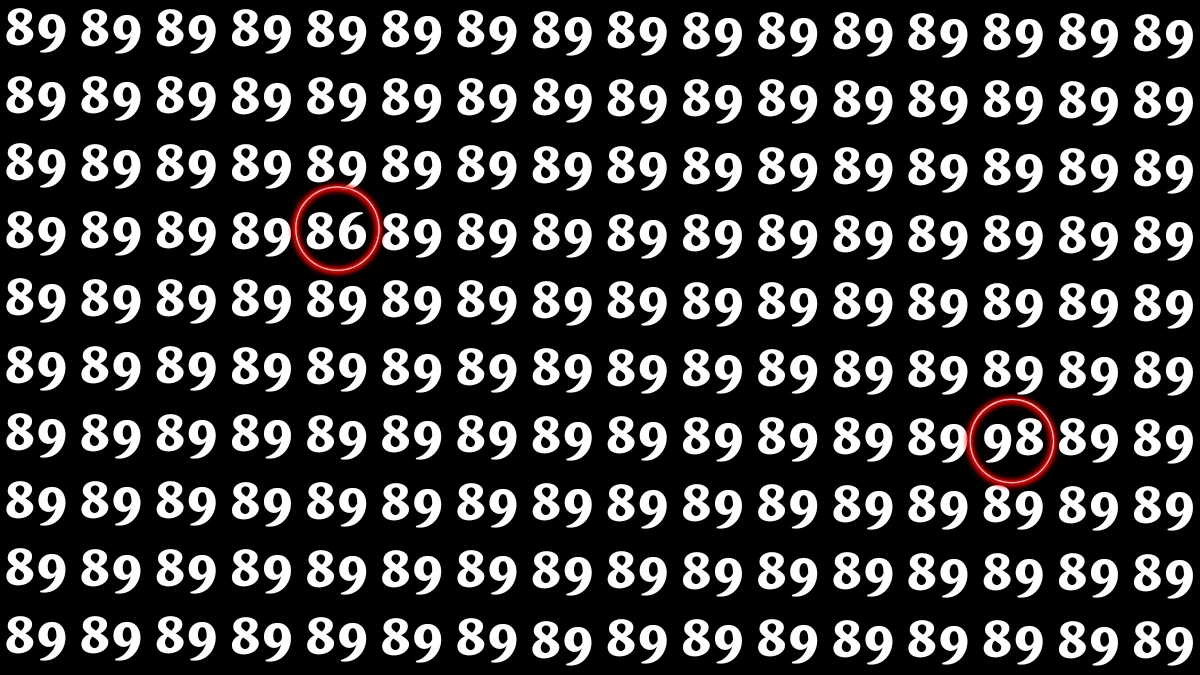Optical Illusion
An optical illusion is a visual phenomenon in which our eyes perceive something that differs from reality, often due to the way our brain processes light, color, patterns, and perspective.
These illusions trick the brain into misinterpreting the information received from the eyes, creating false or distorted perceptions.
For example, two lines of the same length might appear unequal, a still image may seem to move, or colors can look different depending on their surroundings.
Optical illusions occur because the brain tries to simplify and make sense of complex visual input, sometimes relying on context, contrast, and past experiences.
They highlight the fascinating gap between perception and reality, showing that what we “see” is not always an exact reflection of the external world but rather a construction shaped by our brain’s interpretation.
Optical Illusion: Within 5 Seconds Spot The Number 86 and 98 among 89
This optical illusion is designed to test how sharp your observation skills really are. At first glance, the picture looks filled with the number 89 repeated over and over.
Hidden among them, however, are two tricky numbers: 86 and 98, camouflaged to blend in with the rest. The challenge is to spot both of these numbers within just 5 seconds.
This time limit adds excitement and puts your visual focus to the test. Such puzzles stimulate the brain, improve attention to detail, and sharpen concentration. If you find the hidden numbers quickly, it means you have excellent visual recognition skills.

Optical Illusion: Within 5 Seconds Spot The Number 86 and 98 among 89 - Solution
To crack this illusion quickly, start scanning the grid methodically from the top-left, letting your eyes move row by row while you look for any disruption in the repeating “89” pattern.
The first hidden odd number is “86,” which appears in the fourth row from the top, slightly left of the center; you can recognize it because the “9” loses its downward tail and instead forms a “6.”
Once you spot that, shift your focus toward the lower-right side of the image. Here, in the seventh row from the top and close to the right edge, you will find the number “98,” which flips the usual order of digits after an “8,” you see a “9” preceding it, creating “98” instead of “89.”
By concentrating on these rhythm breaks looking once for a missing “9” tail to form “6,” and then for the reversed order to form “98” you can reliably locate both hidden numbers in just a few seconds.






